
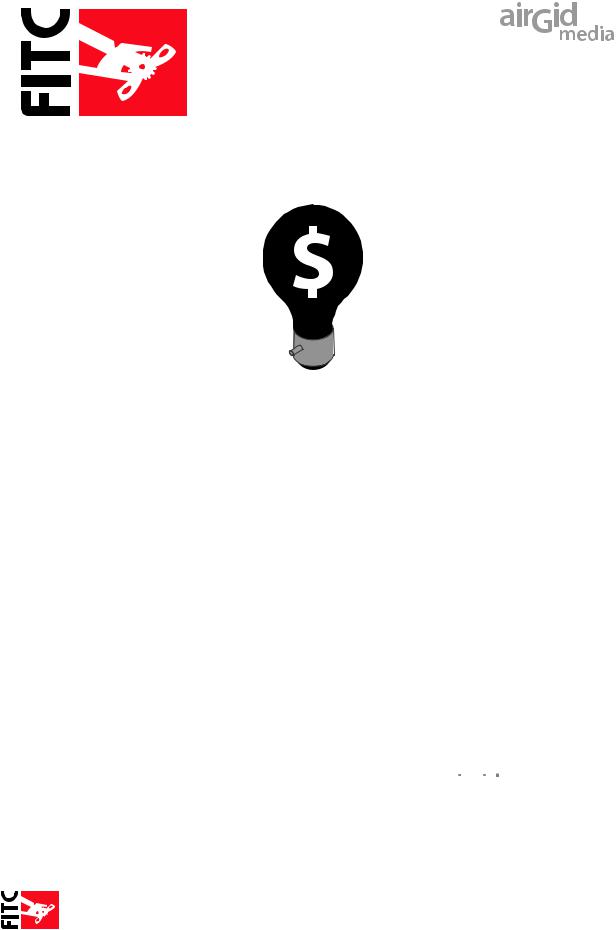
web designer's
Success Guide:
< how to profit from freelance web design />
kevin airgid
www.airgid.com
< />
This book is supported by FITC, the design and technology events company. Check our website for a current list of our events.

Dedication
I dedicate this book to my wife Crona, without her patience and positive support this book and my successful career would not be possible.
“Marriage is our last, best chance to grow up.” Joseph Barth
Credits
Brian Reindel ~ Copy Editor
Crona Airgid ~ Editor
Special Thanx
John Read
Kathleen Hickey
Carole Guevin
Jonathan Clark
Kirill Brusilovsky
Scott Allen
Jennifer Stuart
Copyright 2006 Airgid Media Inc.
All rights reserved. No part of this book shall be reproduced or used anywhere. You can share and copy this PDF book with anyone you like. But do not copy the contents and try to make money from it. OK! While every effort was made to ensure the accuracy of this book, errors do happen. This book is provided “as is” and the author makes no warranties on the content or procedures contained herein. The author shall have neither liability nor responsibility to any person or entity with respect to any loss or damages arising from the information contained in this book.
< />
This book is supported by FITC, the design and technology events company. Check our website for a current list of our events.
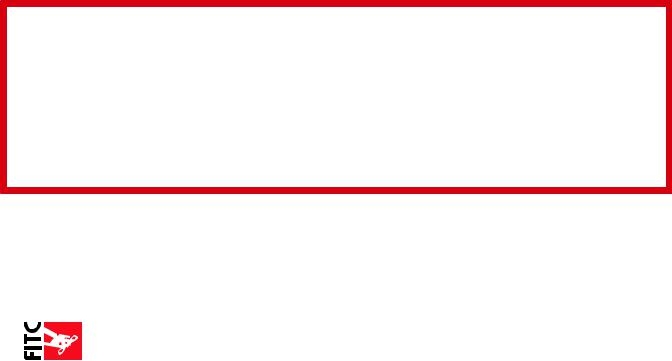
TOC
< the stuff />
FORWARD |
By Jonathan Clark |
4 |
CHAPTER 1 |
Starting up |
6 |
CHAPTER 2 |
Tooting your own horn |
16 |
CHAPTER 3 |
Office on the cheap |
27 |
CHAPTER 4 |
When projects go wrong |
33 |
CHAPTER 5 |
How to share your knowledge and make money |
41 |
CHAPTER 6 |
Project management and pricing |
49 |
CHAPTER 7 |
Teach your clients to make bread |
68 |
RESOURCES |
Things you can use |
80 |
Get this book in Printed Form!
Why buy a printed version? It lasts longer and stays together better with a cover. It’s easier to read. You can give it as a gift to someone after you are done reading. It’s easier to follow the tutorials with a printed version. It’s cheap!
Get the printed book, with a shinny color cover : http://book.airgid.com/
< />
This book is supported by FITC, the design and technology events company. Check our website for a current list of our events.

Forward
< by Jonathan Clark />
Have you ever stood at the beginning of a path and following your eye along it.... up, up and up
– there, way out in the distance, a vast mountain lies with its peak hovering above the clouds. And you, the intrepid adventurer, have to climb this mountain. This same thing can be said for many things in life, freelance being one of them.
Everybody needs a hand they can hold along this journey, someone they can look up to and say, ‘help!’, when the going gets tough. Sometimes that hand is there, and very often it is not. What Kevin aims to offer you with this guidebook is a helping hand – some reassurance or even a kick start along this journey. Kevin points out crevasses where he or other people have fallen into, but he also provides good pointers for short cuts on the path and things you can do on those quiet days where not much is happening… and very importantly, he teaches you to ration your food (money) wisely.
An indispensable book for the first timer and a good read also for somebody with a bit of expe- rience already on those paths, as everybody can learn from other peoples experiences.
Let your journey to the top of that mountain be a challenging and fruitful one and don’t forget to take your camera with you!
Jonathan Clark
www.jonathan-clark.com
< />
This book is supported by FITC, the design and technology events company. Check our website for a current list of our events.
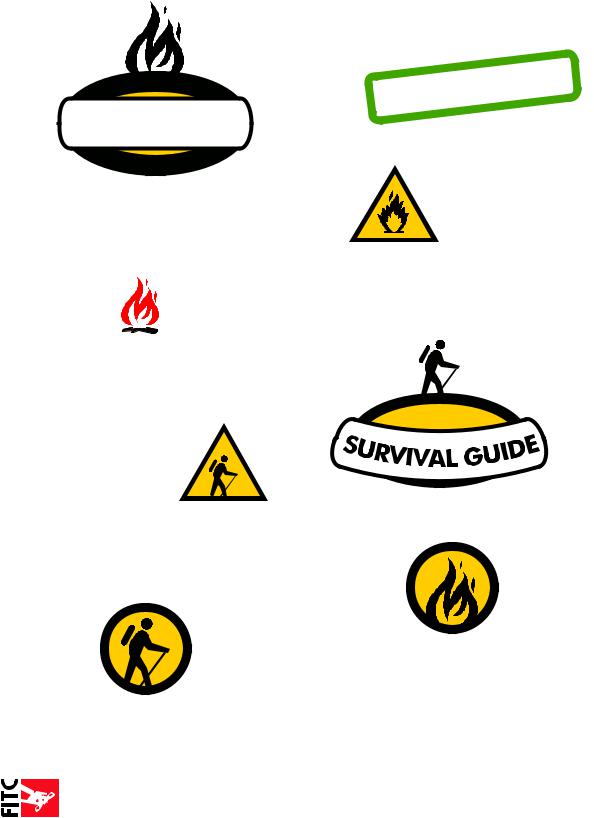
“The Rejects”
Below are some logos that didn’t cut it for the book cover, but I thought they where pretty good and so they see the light of day as “The Rejects” page.
WEBDESIGNER'S
SURVIVALGUIDE
|
|
|
|
GID |
|
|
|
|
IN |
AIR |
|
|
|
|
|||
KEV |
|
|
|
|
|
|
|
|
|
|
|
|
|
|
|
|
E |
|
|
|
|
|
|
|
ID |
|
|
|
|
|
|
|
L |
GU |
|
|
|
|
|
|
A |
|
|
|
|
|
|
|
IV |
|
|
|
|
|
|
|
V |
|
|
|
|
|
|
R |
|
|
|
|
|
||
U |
|
|
|
|
|
|
||
S |
|
|
|
|
|
|
|
|
WEBDESIGNER'S
SURVIVALGUIDE
WEBDESIGNER'S
SURVIVALGUIDE
WEB DESIGNER'S
WEBDESIGNER'S
SURVIVALGUIDE
WEBDESIGNER'S
SURVIVALGUIDE
WEBDESIGNER'S
SURVIVALGUIDE
< />
This book is supported by FITC, the design and technology events company. Check our website for a current list of our events.

CHAPTER ONE starting up
< />
This book is supported by FITC, the design and technology events company. Check our website for a current list of our events.

Introduction
First and foremost, thank you for buying my book! The money you spent will go to a good cause – most notably my daughter’s education fund. In turn, I hope to repay your kindness and interest in freelance Web design with fruitful chapters, chock-full of useful tidbits and practi- cal advice. This will enable you to amass an empire fit for taking over the world, to strike out on your own or to at least work in the evenings to make some extra cash. I have tried as much as possible to make this book “fat free”. We have all purchased books where there were large amounts of filler just to make the book look thicker on the shelf. So no fat here, just what you need to know to build your freelance Web design business.
After doing a little market research, it became very apparent that there were no books that really taught people the ins-and-outs of running a successful freelance Web design business. Yes, there are other small-business books that try to cover everything from creating a business plan to do- ing your taxes, but these are rarely industry specific. They are nifty if you want to be a jack-of- all-trades and master of none. This book is aimed specifically at creative individuals, and it will teach you how to maximize your creative talent in order to make money. Nonetheless, there are some books that offer valuable insights on how to run the accounting and legal side of your new business venture. I list a few I highly recommend at the end of this book To keep you focused and on task, I decided it was better if we did not cover those subjects in depth.
I love designing interactive Web sites, and it is fantastic that people pay me to do something I love. I have been working freelance since 1993. There is nothing more rewarding than managing your own creative process and producing creative that has not been tampered with by an overly opinionated supervisor. Being the master of your own domain is truly a pleasure, especially when it comes to producing a flawlessly designed Web site. Of course, freelance is not without its headaches, and I hope to help you avoid some of them in the following chapters. Learn from my mistakes and successes, and you will find building your freelance Web design business to be a very rewarding endeavor, both for your ego and your pocket book.
Why designer’s freelance – fun or fear?
It has been my experience that designers freelance for one of two reasons: for fun or out of fear.
You need to decide what “f” word is motivating you. It was the fear factor that drove me into freelance. I was employed at a small interactive firm that laid me off due to an economic down turn. I tried to find a full-time position that paid as well as my last one, but there where no job opportunities in my area. For fear of loosing my house, my car and the shirt of my back, I had to find paying freelance clients and fast. Fortunately, I had been freelancing on the side for sev- eral years and I was able to convert some of my part-time clients into full-time revenue streams. For any Web designer wishing to freelance in the future, that is what I recommend. If you are working full-time right now, either inside the interactive field or in another discipline com- pletely, I highly recommend you start to build up a small base of freelance clients. This makes the jump into full-time freelance less difficult and not as overwhelming. That way you can be as motivated by the fun factor as you are by the fear factor. The problem with starting freelance full-time or “cold turkey”, is that you do not have enough business to sustain even a modest income. There is nothing more stressful than trying to find new clients simply because you have too many bills to pay. It is much better both for your mental health and your bank account if you
< />
This book is supported by FITC, the design and technology events company. Check our website for a current list of our events.

build up a small base of clients first. By acquiring a list of clients and potential clients before you go freelance full-time, you can achieve the following:
W Build your project management and creative management skills.
W Give yourself the confidence and experience necessary to be successful.
W Build a network of client connections.
W Decide if you can handle the headaches of freelancing full-time.
W Learn how to better manage your finances.
By doing a little freelance on the side you can learn a lot about what being a full-time freelancer is really like. I think it is crazy when I read get-rich-quick advertisements claiming to give people everything they need to open their own profitable business in thirty days or less. It’s never that easy. Being self-employed is not for everyone. If you can not manage your own time or your part-time freelance clientele, or you
have trouble with self-motivation, then starting a freelance Web design business may not be for you.
A line of credit: a lifeline or a rope to hang you?
A few years before I began freelancing fulltime, I had the good luck to become friends with a financial planner. At the moment I was working full-time for a world-renowned advertising agency and I was pulling in a good salary. Financial problems were the furthest thing from my mind, but my friend insisted I apply for a line of credit for a rainy day emer- gency. His advice paid off because a few years later I used that line of credit to help jumpstart my full-time freelance business.
The best time to apply for a line of credit is when you are already employed full-time. This way the bank is more likely to give you an amount of credit sufficient to meet all your emerg- ing needs. Think of the line of credit as your insurance policy and not another bank account or
credit card. You will need to suppress the impulse to shop until you drop. I will talk more about that later when you consider updating your software and purchasing the $2500 PDAwith built- in digital camera and electric toothbrush. Like my friend said, the line of credit is more like a rainy day fund to help get your new business through the rough spots.
I recommend anyone who is going to jump into the freelance business full-time to either save enough money to cover your expenses for at least three months, or to obtain this line of credit. I do not claim to be a business or financial expert (keep in mind I have a visual art’s degree), but my own experience has taught me that running your own business can have numerous ups- and-downs. You need to be prepared for when you experience the down times.
< />
This book is supported by FITC, the design and technology events company. Check our website for a current list of our events.

Designing your freelance Web site
One of the most important parts of your advertising arsenal is your Web site. Your Web site is the place where you display your product to potential customers. Your product is design and interactive media, and it is important that these potential customers can view a wide range of projects. Often interactive designers will post what they feel is their best work to their Web site. While this is a good idea, I have learned that it is better to have a wide range of styles and types of projects posted online. Even if some of the work is not your best, it is better to post projects that represent a wide range of work. For instance, I have work posted in my portfolio from when I helped design the 1999 refresh of the
Chevrolet.com Web site. The designs look old and dated, but the brand name recognition helps build my credibility with new clients.
As designers we are often very critical of our own work. I have been pleasantly surprised by how much a new client likes a past project of mine that I consider old and inferior to my more modern work.
When you design your freelance Web site you need to think about your target audience. Every designer has their own style and market niche. You need to decide if you want to do work for any or all of the following: advertis- ing agencies, B2B organizations, B2C organi- zations, non-profits and mom-and-pop shops.
It is a good idea to do a little research before you begin sketching out the design. Try to learn about what your target audience looks for when they select a freelance Web site designer. In the case of my site, Airgid.com, I have gone through many iterations over the years. One of those iterations consisted of a heavy Flash interface that infused aliens and robots throughout the Web site. The theme was a 1950’s horror movie.
“The Attack of the Killer Web site” (Fig. 1.1) generated a tremendous amount of attention in the online design community. When I launched the Web site it was featured in several design portals around the world. My Web site usage statistics skyrocketed and I even had to move up to a new hosting plan to keep up with the bandwidth the site used. Although it was receiving a lot of attention from the Web design community, it did not generate new work. I did a little digging and talked to some of my clients. Most of them did not really understand why I had a slew of aliens and robots dominating my site. They could not see the “business logic” behind it.
Another big problem with this version of my Web site, was that access to the most important information was four clicks deep. An analysis of my server logs revealed that users went straight for the portfolio section, they viewed a few projects and then they left. The time spent searching for this area and the hindrance of not being able to view brief highlights of my work became a major concern. Users where forced to follow this path to look at my portfolio pieces:
Splash page > home page > portfolio page > portfolio piece
< />
This book is supported by FITC, the design and technology events company. Check our website for a current list of our events.
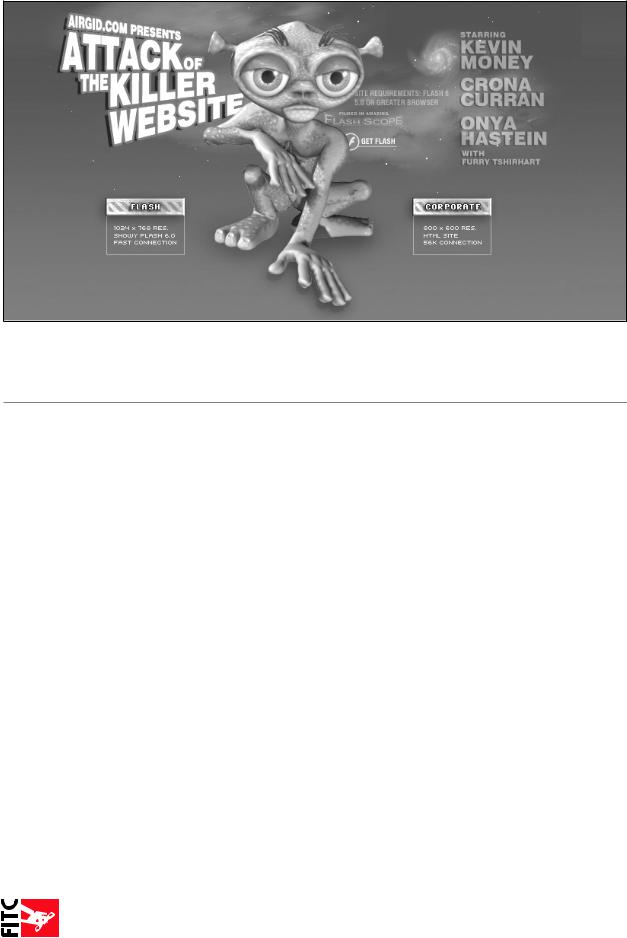
Figure 1.1 -- “The Attack of the Killer Web site” gained a lot of attention in the design community. It even won a few awards, but I lost business because it did not communicate the right message about my entire skill set. You can view an archived version at http://www.airgid.com/flash
Another issue with this Web site was the fact that the home page was extremely overweight. It required a download of a little over one megabyte, and secondary pages where not much better.
So even with a fast DSL connection, the Web site took a good deal of time to load. All of these mistakes coupled together made for a bad user experience. My target audience is full of busy marketing managers, creative directors and CEOs of fast-paced companies. They do not have the time to click, click, click, to find valuable information. They want it now and often they need to make a decision fast… should I hire Kevin Airgid to do my work, or should I look elsewhere?
I have since created a leaner, meaner Web site (Fig. 1.2). Even though it is much more business- oriented, it has just the right touch of creative flare and professionalism. I have gained both highly creative and engaging projects, as well as steady corporate design assignments. The port- folio now follows the popular Amazon.com one-click methodology. When the user arrives, my portfolio is the first thing they see. The home page is cleverly disguised as the portfolio page, and my product is served for consumption by the masses. Keep the following lessons in mind as you design your next freelance Web site.
WYour work should sell itself. Do not worry about lengthy explanations or marketing jargon for each project. Ashort, punchy paragraph emphasizing the skills utilized is sufficient. Most users only skim text online.
WMake your portfolio easy to access and fast to download. Keep in mind even speedy corporate T1 connections partition bandwidth and can slow down.
WEven though your clients may want to hire you for your Flash animation skills, do not make them wait to see your portfolio. Resist the temptation to use your portfolio interface to flex
< 10 />
This book is supported by FITC, the design and technology events company. Check our website for a current list of our events.
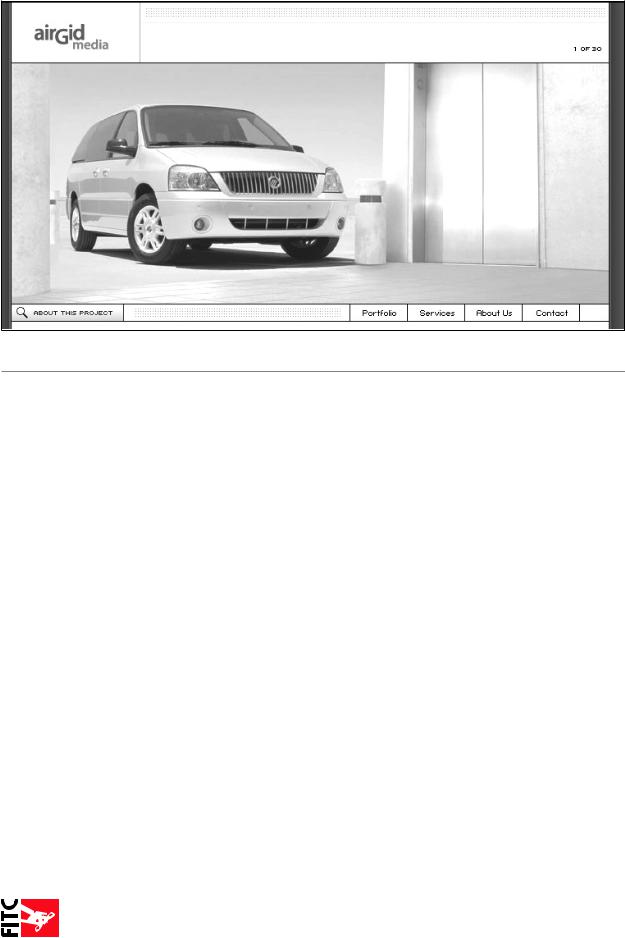
Figure 1.2 -- My new Web site is only 41Kb in size, and the portfolio is one-click access.
your animation muscles. If you need to show this off, create a separate “demo reel” that users have an option to select.
WCorporate design may feel boring to
Web designers, but in my experience it helps keep a Web site grounded in reality, especially when you have a lot going on in your portfolio. If we do our job, the information architecture and interface design should compliment one another and provide a pleasant user experience.
Finding work – the cold e-mail campaign
SUCCESS TIP
When NOT to send an e-mail.
Never send cold e-mails on Friday or Monday. I have found that most marketing managers, creative directors (and the like) are fried by the
time Friday rolls around. A cold e-mail sent on a Friday will probably be ignored or deleted. If you send an e-mail on the weekend and it is viewed on Monday, it will most likely get lost in the rest of the SPAM and internal company memos that get sent out. I have found sending e-mail the rest of the week to achieve better success. This is also true with cold calling.
So how do you go about getting a small base of paying clients? The way I started was by
simply using my network of friends and associates. I heard it once said that philosophy is common sense dressed up in a 3-piece suite. And it is true even for a one-man-show freelance business. E-mail your friends, family, associates and acquaintances and tell them you are looking for freelance work. You will be surprised how fast e-mails can get passed around. Before you know it, you may have your first freelance project. For instance, I e-mailed a friend of mine who was looking for work. She interviewed at a large advertising agency in Detroit, Michigan. While on the interview she learned they needed to hire some interactive designers. Her e-mail gave me the scoop that this particular agency needed help. The lead got me a 3-month contract that I would have never learned about if I did not e-mail her.
< 11 />
This book is supported by FITC, the design and technology events company. Check our website for a current list of our events.

One of the things I learned early on when I started doing freelance is how powerful e-mail can be as a tool to gain new business. We all use e-mail to communicate with friends, family and coworkers, but we really do not think of it as an
advertising medium. E-mail is one of the best ways to find hot leads for new business. If someone is not interested in your e-mail they just delete it, and if they are interested they can reply to you within seconds. It is the best way to reach out to potential clients without bothering them on the phone or knocking on their door.
When I e-mail someone looking for work I keep my e-mails very short and to the point. Think about who your target audience is for your e-mail and what they would be most interested in knowing about what you have to offer. E-mails with long-winded “market- ing” speak really do not work. Most of my clients have one thing in common – lack
of time! They are grazers when it comes to information, and they typically skim e-mails from people they do not know or delete them
without reading them. You only have a few milliseconds to catch their attention before your e- mail ends up in the trash.
I have found a method that works extremely well for gathering qualified candidates for my e- mail campaigns. This method takes more work than just sending e-mails to the arbitrary info@ company.com, but you will achieve better results and your efforts will be rewarded. For this example I will demonstrate how I would go about finding the name and e-mail address of a creative director at a large advertising agency. You could also use this method for the marketing manager of a B2B company or any other related field.
Step 1: Finding the name
The fastest way for me to find the name of a creative director for an ad agency is to look at trade publication Web sites. For instance, in Detroit (near where I live), there is a magazine called Big Idea. This magazine helps represent the local communication arts community. Many creative directors’names are published here when they win awards or land new projects. It is an excel- lent resource for finding potential leads. You can also find the names of these people by reading company press releases. Often they will mention the names of those individuals involved with generating new business. Sometimes a Google search on a company name (or the agency’s clients) will yield key contact names. Okay, we have followed these steps and found our name. For illustration purposes we will call our lead “John Smith”.
< 12 />
This book is supported by FITC, the design and technology events company. Check our website for a current list of our events.

Step 2: Finding the e-mail
Most companies have a strict naming convention for staff e-mail addresses. You can crack this naming convention by looking for clues on their Web site. Start by searching for a sales contact. You can use this to decipher the naming convention. For instance, the sales manager is listed as
Jim Doe, and his e-mail is jdoe@company.com. So the naming convention is “letter of first name, then full last name”.
Step 3: Writing the effective e-mail
Here are some examples of effective e-mails that have landed me work in the past.
Target Client: Contact at medium-size company.
Comments: This e-mail landed me several medium-size company Web site redesigns.
Ever thought of a Web site redesign? Something to make your site stand out above your com- petition online? I have done work for clients such as Ford, Marriott Hotel and Lexus to name a few, and I can offer a range of freelance prices.
To learn more, please view my Web site:
http://www.airgid.com/
Why hire airgid.com?
http://www.airgid.com/why_hire/
Target Client: Creative Director
Comments: This is the standard e-mail I send to any large ad agency. This e-mail includes a resume as well. Your work history can sell you just as much as your portfolio of work.
Ever need a freelance Web/Flash designer? Please consider my services:
Portfolio Web site:
http://www.airgid.com/
Why hire Kevin Airgid?
http://www.airgid.com/why_hire/
Resume:
http://www.airgid.com/resume/
< 13 />
This book is supported by FITC, the design and technology events company. Check our website for a current list of our events.

Amnesty 40th Time line (Copyright Amnesty International)
Target Client: Office Furniture suppliers - UK
Comments: I sent this to probably 100 different companies. It gained me one qualified lead, which is actually a good ratio considering the number of companies I e-mailed.
I have recently completed a Web site for a company similar to yours:
http://www.russellofficecenter.com/
Ever thought of doing a Web site redesign to make your site more interactive, and easier to update? My client, Russell Office Supply, can now update their Web site themselves. It is easy to do. Let me know if you are interested in a cost estimate.
You can learn more here:
http://www.airgid.com/
Why hire airgid.com?
http://www.airgid.com/why_hire/
P.S. - I am based in Canada, and the exchange rate from British Pound to Canadian dollar is an added benefit to you.
< 14 />
This book is supported by FITC, the design and technology events company. Check our website for a current list of our events.

Other places to find work?
Another excellent way to get your feet wet with freelance is to volunteer your skills for a charity.
If you are working full-time and do not know where to start looking for work, a recommenda- tion is to start off with charity work. Volunteering to do a Web site for a charity will enable you to test out your project management skills, and more importantly your ability to deal with a client directly. The other excellent benefit to doing a project for free is you can typically dictate the design. This means you can add a really nice project to your portfolio, which can help you sell your services later. There are many charities out there who would benefit greatly from your talents.
My first big freelance project was a pro-bono interactive Flash timeline I did for Amnesty Inter- national. This piece landed me paying gigs with clients such as CBC News and General Motors. More importantly, Amnesty International enjoyed working with me, and actually hired me to do more interactive pieces.. However, doing freelance work for charities is not without its frus- trations. Often charities have an intense bureaucratic structure, and you will need to be patient with committees and several layers of approval. Yet, working with charities can give you a great sense of accomplishment as you help build something for a worthwhile cause.
Chapter Summary
Typically publishers force authors like me to write these blasted summaries for every chapter I never read them, do you? They are a waste of time - who needs a summary of what they just
read! After all, this is not a schoolbook. So, from this point on, no more summaries at the end of chapters! Like I said, no fat in this book!
< 15 />
This book is supported by FITC, the design and technology events company. Check our website for a current list of our events.
